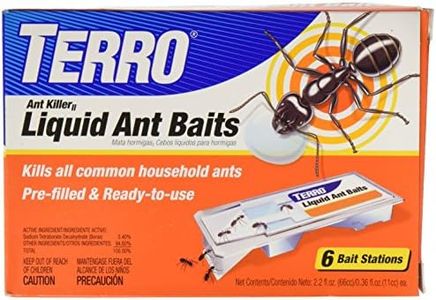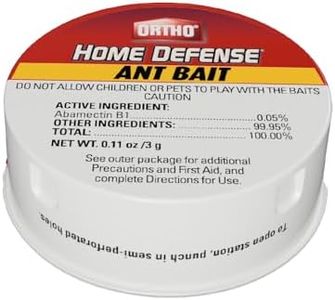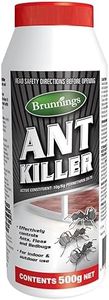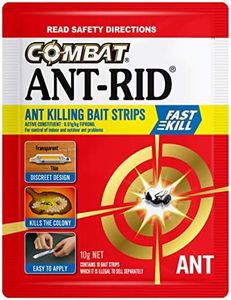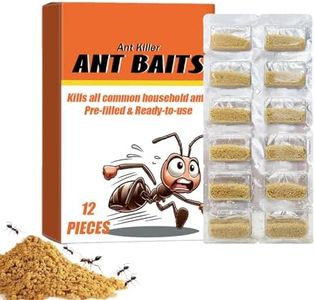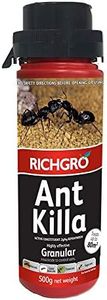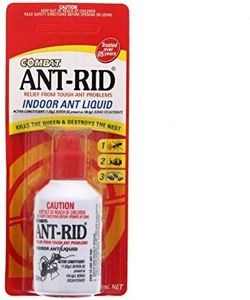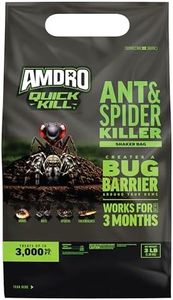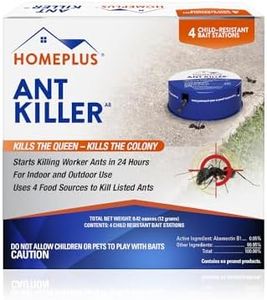We Use CookiesWe use cookies to enhance the security, performance,
functionality and for analytical and promotional activities. By continuing to browse this site you
are agreeing to our privacy policy
10 Best Ant Traps
From leading brands and best sellers available on the web.Buying Guide for the Best Ant Traps
Choosing the right ant trap can make all the difference in controlling an ant problem efficiently and safely. Rather than just buying whatever is on the shelf, it's smart to understand how ant traps work, what types are available, and how your situation affects which kind you should use. Knowing the key features and how they match your needs will help you get results faster and reduce any unnecessary risks.Trap Type (Bait vs. Kill-on-Contact)This spec refers to whether the trap uses a bait to attract ants to carry poison back to the nest or if it simply kills ants on contact. Bait traps work by attracting ants, which then bring poison back to their colony, potentially eliminating the entire problem at its source. Kill-on-contact traps kill ants immediately but may not target the nest. Bait traps are usually better for infestations where you want lasting results, while kill-on-contact types are useful for quickly tackling visible ants. For most home situations with recurring ants, bait traps are more effective for long-term control, but for an immediate reduction in visible ants, contact-based solutions can provide fast relief.
Active IngredientThis spec indicates the main chemical used to kill ants. Common examples include borax, hydramethylnon, or essential oils. The ingredient affects safety (especially if you have pets or kids), effectiveness, and how fast the ants are killed. Some ingredients are slow-acting, giving ants time to carry it to the nest; others work faster but may not eliminate the colony. If you have children or pets, opt for traps with less toxic ingredients and always follow safety guidance. For outdoor use or tough infestations, stronger chemicals might be appropriate, but indoors, gentle options are often preferable.
Indoor vs. Outdoor UseSome ant traps are made for indoor use, some for outdoor use, and some are suitable for both. This matters because outdoor traps are typically weather-resistant and may use stronger ingredients, while indoor traps are designed to be less obtrusive and safer. Choose traps labeled for your intended location to ensure effectiveness and safety. If your ant problem is inside, stick to traps designed for indoor use to reduce any risks to your household.
Form Factor (Gel, Liquid, Solid/Station)Ant traps come in different forms such as gels, liquids, or enclosed stations. Gels and liquids can be placed in hard-to-reach areas but may require careful placement to avoid spills. Enclosed stations are safer and easier to place around the home, especially with kids or pets. For open areas or if discretion is needed, enclosed stations are usually best; gels and liquids may reach tricky spots but need more cautious handling.
Ease of Use and MaintenanceThis refers to how simple it is to set up, check, and replace the traps. Some traps require frequent replacement or refilling, while others are set-and-forget for several weeks. If you want a low-maintenance option, look for traps that last longer without attention. If you want to monitor effectiveness closely, easier-to-check models might suit you better. Consider your willingness to maintain and your household’s schedule when making a choice.
